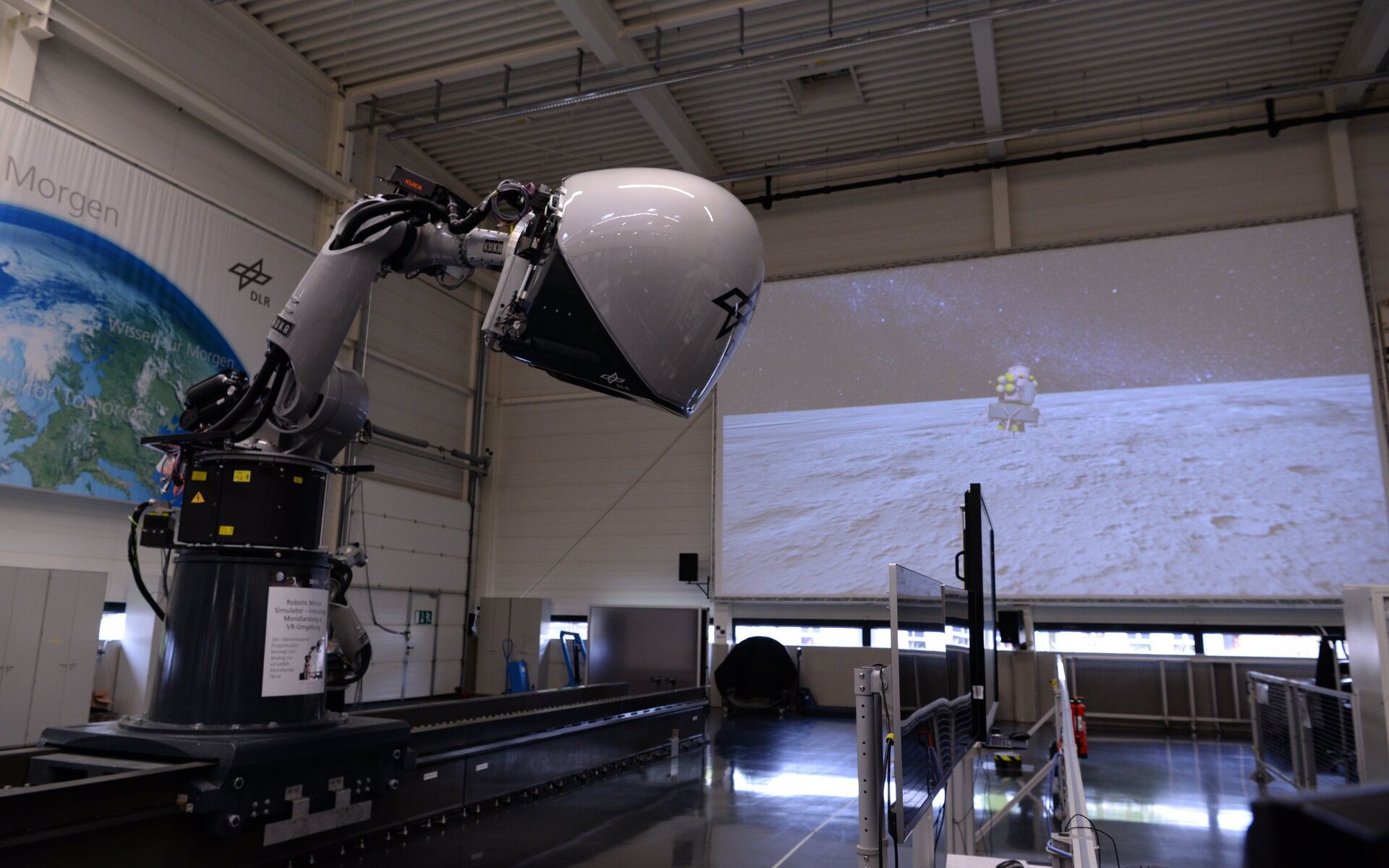The European Space Agency (ESA) is learning how to touch down safely at the South Pole of the Moon, without ever leaving Earth. Actual Moon landings seem to be on the horizon in the next decade via the Artemis program, and astronauts are going to have to learn to handle the unique challenges of landing in the Moon’s polar environment. With low angle sunlight and deep, permanently shadowed craters, the Moon’s South Pole poses difficulties no Apollo mission ever faced. To get hands-on experience with this environment without risking human life, ESA is putting astronauts through their paces on high-tech simulators.
Simulators have long been a part of space exploration. Movie fans probably remember Gary Sinise – playing astronaut Ken Mattingly in the classic 1995 film Apollo 13 – denying himself sleep and rest to run test after test in the simulator, searching for a way to bring the mission’s endangered crew home safe. In real life, NASA used a variety of simulators during the Apollo era to test different aspects of the program.
The most visceral Apollo testbed was the rocket-powered Lunar Lander Research Vehicle (LLRV), designed to simulate landing in a low-gravity environment. The LLRV gave Neil Armstrong and his colleagues valuable practice on Earth before testing the real thing on the Moon. but the LLRV came with its own risks. It crashed several times, forcing Armstrong and other pilots to make use of the built-in ejection seat and parachute to safety. Still, it was better to crash on Earth than on the Moon!

ESA’s new simulator, part of the ‘Human-In-the-Loop’ flight vehicle Engineering study, doesn’t leave the ground or rely on rockets – it’s built onto a large-scale robotic arm, which is able to move and shift at extreme angles to simulate the effects of the commands the astronaut gives the computer. Based at the German Aerospace Center (Deutsches Zentrum für Luft- und Raumfahrt; DLR), the Robotic Motion Simulator is a feat of engineering in its own right.
ESA astronaut Robert Vittori, who has been to space three times before, put the simulator through its paces. “The simulator is an incredible machine, probably one of the best I have experienced,” he said. “This experiment today is for me showing that Europe can play a key role in the future of exploration.”

Vittori tested various scenarios, including overriding the autopilot that was set to land in a field of boulders, and switching to manual control when the computer developed a fault.
The philosophy of ESA’s Human-In-the-Loop program is that hardware engineering and software design choices for spacecraft ought to be made in cooperation with the humans who will be flying the machines. The human-machine interfaces need to be user-friendly and intuitive, so that at critical moments, like landing on the Moon, there are no surprise design flaws or pilot confusion over the controls.
A similar philosophy enabled the success of the early days of spaceflight, when the Mercury astronauts worked closely with the engineering teams building the capsules and systems. Astronaut Wally Schirra, for example, specialized in life support systems and space suit development, while his colleague Scott Carpenter worked with the team building navigational equipment. In the present day, ESA is taking this philosophy to the next level. “We’re establishing a preliminary design and the preliminary requirements for human lunar landing, with astronauts in the loop to improve robustness and reliability of the flight system,” says project manager Luca Ferracina.
ESA has been heavily involved in the Artemis program since the beginning. It designed and built the service module of the Orion capsule, which will take astronauts to lunar orbit, working closely with NASA and other international partners. ESA astronauts will be on board at least three of the Artemis missions to the planned Lunar Gateway space station in the coming decade.
Learn more:
“ESA astronaut performs simulated polar Moon landing.” ESA.
Featured image: the DLR Robotic Motion Simulator. ESA.

